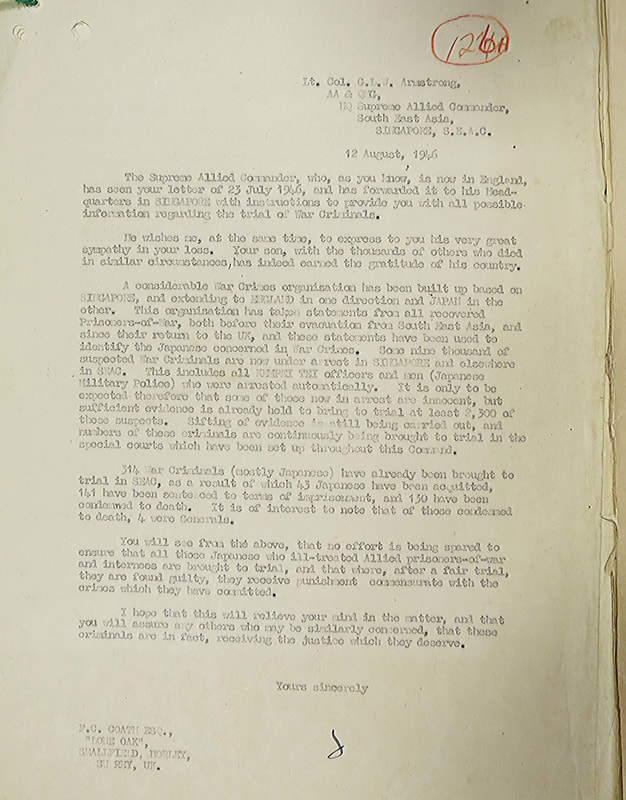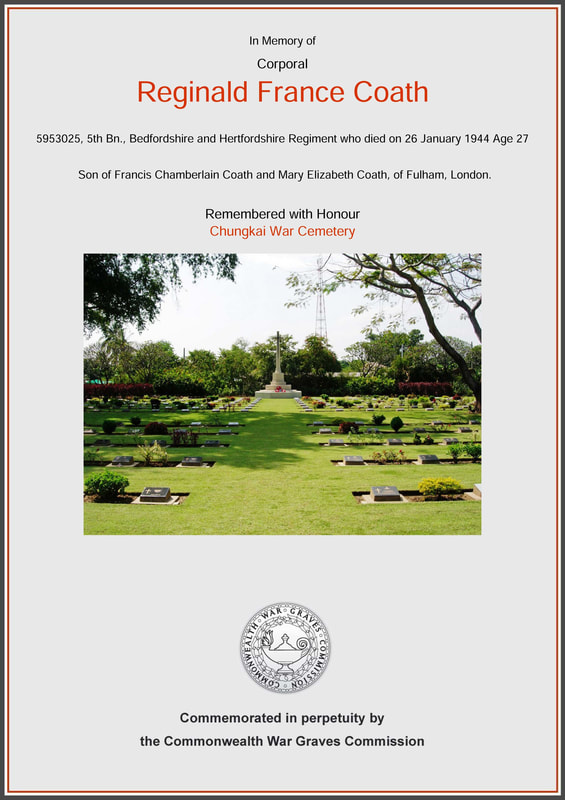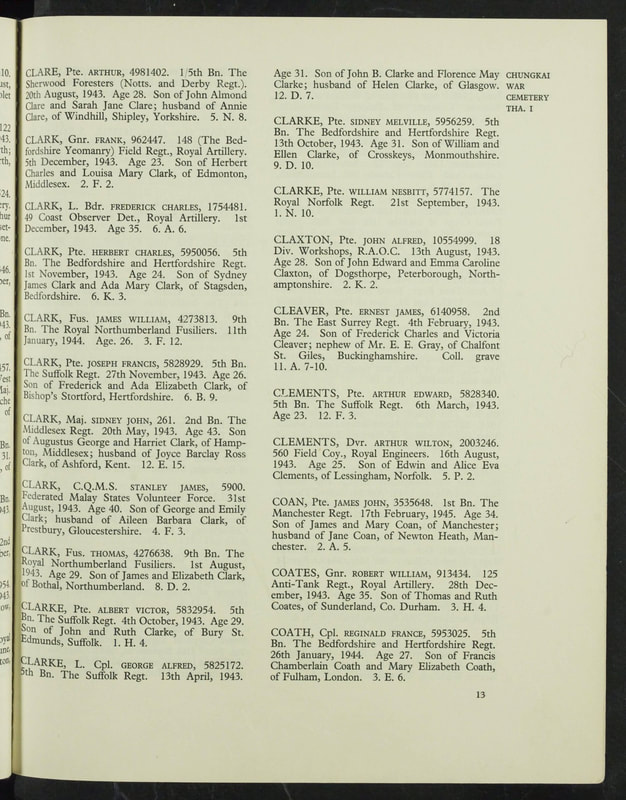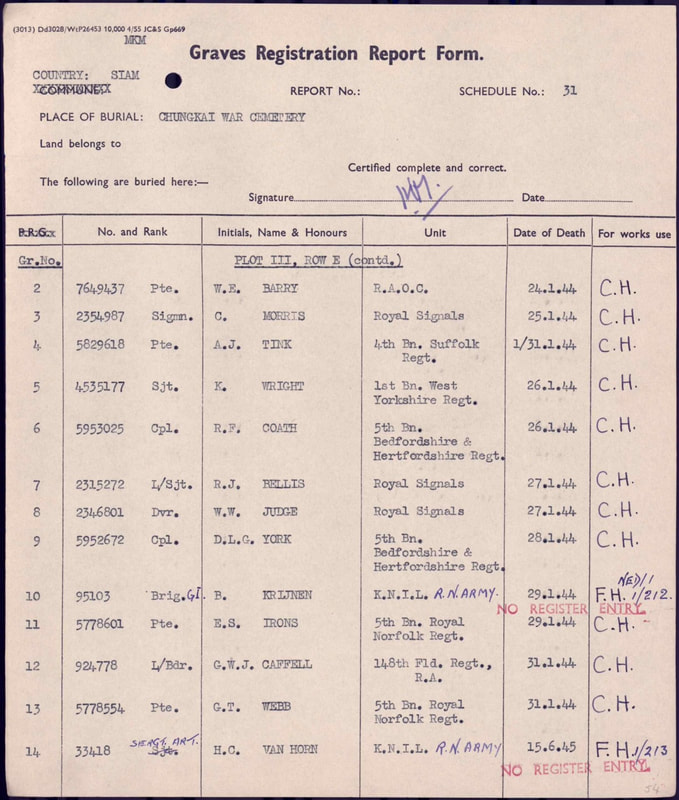CORPORAL R.F. COATH: A FATHER SEEKS JUSTICE
|
20 March 2017
Sometimes, you come across a document in the archives that tugs at the heart, fires the imagination, and compels you to dig deeper. I was looking through a file that was marked ‘War Crimes - Miscellaneous.’ A Japanese gentleman had contacted me a few months ago and asked me to help trace the fate of nine Tyrolean priests in Borneo. We had hoped that this particular file would provide some clues to several Japanese officers who were not charged for war crimes but could possibly have been interrogated in connection with this event. Poring through this file, it soon became clear that the documents relate to how the administrative wheels were turning behind the scenes even as the war crimes investigation units and the JAG personnel prepared for trial. No records of any interrogations at all. Among them: liaison forms between departments about arrests or transfers of war criminals, sundry lists detailing the cost of provisions for prosecutors (incl. comb, cigarettes, tooth powder etc) for the duration of the trials, miscellaneous correspondence… However, one document stood out for me – a letter from Lieutenant Colonel G.W. Armstrong in South East Asia Command, Singapore, dated 12 August 1946. It was a reply to a letter from F.C. Coath from Smallfield, Horley, Surrey, dated 23 July 1946. (Sadly, Mr Coath’s letter was not in the file.) In the reply, Armstrong assures Coath that “your son, with the thousands of others who died in similar circumstances, has indeed earned the gratitude of his country.” Further, that a “considerable war crimes organization has been built up based on Singapore, and extending to England in one direction and Japan in the other” and that “no effort is being spared” to bring “those Japanese who ill-treated Allied prisoners-of-war and internees are brought to trial.” It made me wonder. What did Mr F.C. Coath write? Did he, at that point in time, know where his son was buried and how he had met his fate? Who was his son? Apart from the family name ‘Coath’, I had nothing else to go on. So I started to look up war memorials in Smallfield, then Horley. I soon learnt that there is a war memorial at St Bartholomew Church in Horley. But it seems that not all the names of war dead were inscribed on the memorial or on the Horley Parish Memorial Board; indeed, it appears that only those who had fallen in the Great War had had that honour. All I could find out was that 45 men from Horley had served. And of the 45, none had returned home. So I decided to try the Commonwealth War Graves Commission. However, there were 16 men with the family name ‘Coath.’ Focusing only on those whose grave/memorial was located in Southeast Asia – I came across Corporal Reginald France Coath, buried and commemorated at Chungkai War Memorial, near Kanchanaburi in Thailand (see picture). I thought, surely, this could be the son of ‘F.C. Coath Esq.’ as mentioned in the letter? Corporal R.F. Coath was with the Bedfordshire and Hertfordshire Regiment. A search for this regiment revealed that this regiment “served with 55th Infantry Brigade, 18th (East Anglian) Infantry Division. After home defence duties in Britain they were deployed as reinforcements to Malaya in early 1942. The battalion surrendered to the Imperial Japanese Army at the Fall of Singapore and the men were held as POWs for the rest of the war.” This all seemed to fit. Confirmation came when Graves Registration documents referenced R.F. Coath as the “son of Francis Chamberlain Coath and Mary Elizabeth Coath.” Surely this was the same ‘F.C. Coath Esq.’ referenced in the letter. (The only question -- or the only discrepancy -- which remains unanswered relate to Mr and Mrs Coath's domicile -- in the related Graves Registration volume, their address is listed as 'Fulham, London' though when F.C. Coath wrote his letter in July 1946, he lived in Surrey. Perhaps between when the letter was written and the memorial in Chungkai was finalised, they'd relocated to the capital.) Corporal Reginald France Coath (service number 5953025) died on 26 January 1944, aged 27, somewhere along the Burma-Thai Railway line, which spanned Nlong Pladuk in Thailand and Thanbyuzayat in Burma (Myanmar). (I didn't find out where exactly.) He is buried at Chungkai cemetery in Thailand, plot III, row E. May he continue to rest in peace. 28 July 2017 Update Was still mulling over the Coath family and found a thread online and learnt that R.F. Coath had an elder brother by the name of John Henry Coath who was born in Fulham. So I'm thinking, maybe Horley was a temporary address? Maybe the family had moved out of London during the war years and later returned to the family home in Fulham? This led me to looking up a genealogy site for Francis Chamberlain Coath. And here's what I've learnt -- Mr Francis C. Coath was born 1881 in Fulham, baptised in St Barnabas Pimlico in 1882 (interesting side fact -- the church was built in 1866, so it was still fairly new-ish when Francis was baptised there), possibly married twice (in 1903 and 1909), and died in 1965. It appears that he may also served in the Great War and was in the armed forces from 1914-1920. Searching Forces War Records, there was only one match for Francis C. Coath -- Rank: Private (Service number: 446001), Regiment: London, Battalion: 10th (County of London) Battalion (Hackney), 58th Division. This unit was involved in the landing at Suvla Bay in 1915 in the Battle of Gallipolli and saw action in the Middle East, from the invasion of Palestine, victory in Gaza, to the Sinai. Francis C. Coath suffered a gun shot wound on 21 September 1918, three days before armistice and demobilisation on 24 September 1918. |



